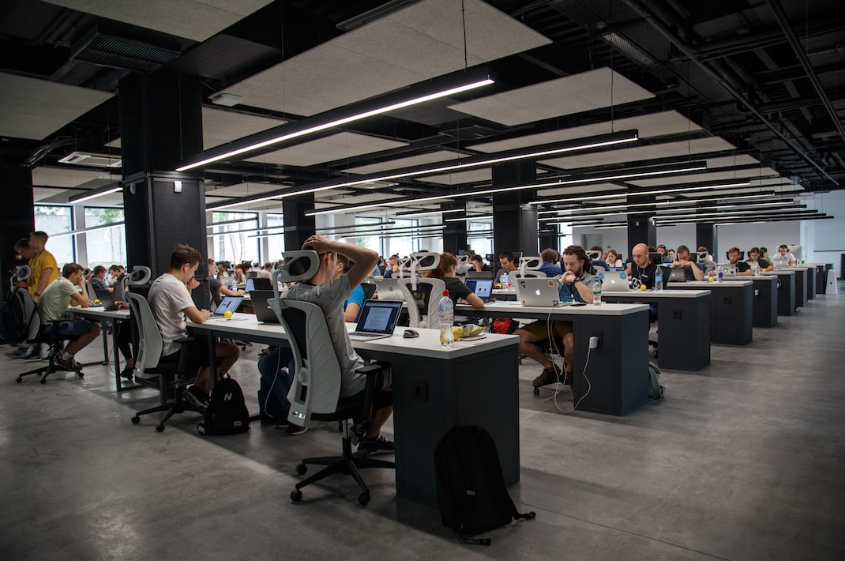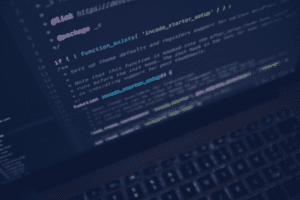
Improving performance within an organization requires a meticulous and systematic approach through careful planning. The client’s investment in a well-designed improvement process will yield significant rewards, such as increased productivity, enhanced quality, improved efficiency, greater revenue, or cost savings. The performance improvement process consists of six phases:
PHASE ONE: IDENTIFY THE AREA FOR PERFORMANCE IMPROVEMENT
During this initial phase, the focus is on identifying the specific area that requires improvement and collaborating with stakeholders to create a project plan.
1. Identify the target area for improvement: While various areas within an organization might benefit from improvement, it is crucial to narrow down and prioritize the specific area that requires attention.
2. Obtain executive and senior management support: Before commencing the performance improvement effort, gaining sponsorship from the organization’s leaders is essential. Their active advocacy is crucial in providing necessary resources and influence for the project.
3. Communicate the purpose of the improvement project to stakeholders: Engage with all relevant stakeholders, including affected workgroups, leaders, and customers. Enlist their support and emphasize the benefits they will gain from the improvement effort. Maintaining open communication with stakeholders throughout the process is vital.
4. Work with stakeholders to develop a project plan: Collaborate with stakeholders to create a comprehensive project plan that includes:
- Roles, responsibilities, time constraints, and expertise of the participants
- Project tasks and deliverables
- Deadlines and schedules
- Available funds and any associated restrictions
- Existing information and its reliability and validity Available resources for the project
- Potential risks and challenges
5. Train all participants involved in the improvement process: Ensure that everyone, including support staff, comprehends the objectives of the process and their individual roles. Provide detailed training as required, especially for those involved in data collection and recording.
PHASE TWO: ANALYZE PERFORMANCE IMPROVEMENT NEEDS
In the second phase of the performance improvement process, the focus is on comparing the current performance in the targeted area with the desired performance and establishing specific improvement objectives.
1. Describe current performance:
- Familiarize yourself with terminology, tools, reference manuals, and training materials related to the target area.
- Map the existing procedures and processes, if applicable.
- Define the current organization of the relevant work group, their roles, responsibilities, and relationships with other work groups and processes in the organization.
- Identify any environmental and organizational constraints impacting current performance, such as regulations, available resources, competition, organizational structure, and culture. e. Engage in discussions with employees and leaders to explore how customer needs are currently being met, what products and services are provided, the value added to the organization, and the processes used to accomplish work. f. When appropriate, measure current work accomplishments to establish a baseline for future comparisons.
2. Define desired performance:
- Collaborate with leaders to articulate the connection between the business goals, strategies, and objectives and the target area.
- Gather data from customers, staff, and leaders to answer key questions related to customer satisfaction, expectations, and needs.
3. Determine the causes of performance problems:
- Examine the elements of effective work performance, including Information, Environment and Tools, Competency, and Motivation, to identify any inadequacies or absences causing ineffective job performance.
- Compare the accomplishments and work behaviors of exemplary performers with those of typical performers.
- Employ various data collection tools, such as observations, interviews, focus groups, surveys, process maps, knowledge maps, and performance support maps.
4. Estimate the cost of the performance problem:
- Evaluate the impact of dissatisfied or underserved customers and the resources, time, and opportunities wasted due to performance issues.
5. Estimate the improvement potential:
- Determine whether the expected improvements will outweigh the costs of enhancing performance. In most cases, the benefits will outweigh the costs, justifying proceeding with the performance improvement process. If not, consider terminating the process for the specific target area.
PHASE THREE: DESIGN INTERVENTIONS
In Phase Three of the performance improvement process, the focus is on defining specific improvement objectives, establishing intervention requirements, and selecting and designing interventions that align with the organization’s needs and constraints.
1. Define specific objectives for performance improvement:
- Each objective should be explicit, measurable, and meaningful, describing the desired
- results and acceptable performance standards. It should also include any qualifying
- conditions.
2. Define specifications for the interventions:
- Gather input from stakeholders, including sponsors, leaders, employees, and technical
- experts, to solicit requirements for the interventions.
- Conduct research, including collecting benchmark data and reviewing relevant literature,
- when applicable.
- Prioritize the identified requirements.
3. Describe effective and efficient interventions:
- Based on the identified problem and the specified requirements, outline interventions that
- align with the objectives. Refer to the table of Performance Improvement Interventions
- for guidance.
4. Estimate the design, development, and implementation requirements:
- Assess the resources and efforts needed for the design, development, and successful
- implementation of each appropriate intervention.
5. Select interventions considering sustainability and environmental constraints:
- Take into account the organization’s culture, values, history, and capabilities.
- Evaluate the likelihood of intervention acceptance, support, and practicality.
- Consider the cost and time required for implementing the interventions.
- Note: Since most performance problems are multifaceted, it is common to require a
- combination of interventions to address them effectively. For instance, improving performance
- in a particular area may necessitate revising selection criteria, creating job aids, and
- modifying work processes and policies.
6. Design or select interventions:
- Develop detailed specifications for the chosen interventions.
- Prepare the intervention design.
- Document the design and obtain stakeholder approval.
- Revise the design as necessary to ensure effectiveness and alignment with requirements.
- Create the interventions based on the designs from Phase Three. This may involve developing job aids, training materials, procedures manuals, coaching programs, helplines, or other resources required to support intervention implementation and sustainability.
2. Pilot test the interventions:
- Conduct pilot testing to assess the effectiveness and feasibility of the interventions in your specific environment. Pilot testing is crucial because interventions that work in one setting may need adjustments to be successful in another.
3. Revise the interventions as needed:
- Analyze the results of the pilot test and identify areas requiring improvement or modification in the interventions.
4. Produce the interventions and support mechanisms:
- Finalize and produce the interventions and support materials after incorporating any necessary revisions.
PHASE FIVE: IMPLEMENT THE INTERVENTIONS
In the fifth phase of the performance improvement process, the focus shifts to initiating the planned changes, communicating the interventions, and providing necessary training or support.
1. Communicate the implementation schedule and changes:
- Continuously communicate the progress of the improvement effort to all stakeholders. Specifically, provide information about the intervention implementation schedule and the changes it will bring. Encourage questions and address concerns to ensure everyone is comfortable with the planned interventions.
2. Provide training or other support mechanisms:
- Prepare individuals responsible for implementing the interventions by offering necessary training and support. Ensure that they are fully equipped and ready for the changes through incentive programs, policy updates, training sessions, supervision, and access to job aids or other resources.
- Begin the implementation of the interventions as planned. Expect a period of adjustment and allow time for people to become accustomed to and accepting of the changes. Ensure that the support mechanisms designed in Phase Four are appropriately deployed to facilitate a smooth implementation process. Address any objections or questions that arise and be prepared to resolve unforeseen issues that may surface during full-scale implementation.
This phase marks the actual implementation of the performance improvement interventions. Continuously monitor progress, address concerns, and adapt as needed to achieve successful outcomes. The next phase will focus on evaluating the effectiveness of the interventions and ensuring sustainability.
PHASE SIX: EVALUATE AND SUSTAIN THE INTERVENTIONS
In the final phase of the performance improvement process, the focus is on evaluating the effectiveness of the interventions and ensuring their long-term success.
1. Evaluate the effectiveness of the interventions:
- Assess how well the interventions have achieved the objectives specified in Phase Three. The primary focus is on the interventions’ impact on performance improvement, rather than their popularity.
2. Revise the interventions as needed and evaluate the revisions:
- Based on the evaluation results, identify any areas where the interventions require revisions or improvements. Implement these changes as soon as possible to maximize the benefits of the improvement effort.
3. Sustain the effectiveness of the interventions over time:
- Continuously monitor the interventions to ensure their ongoing effectiveness. Changes in the work environment may necessitate adjustments to the interventions to maintain their relevance and impact.
- To prevent a return to previous work habits and sustain the improvements, consider implementing the following:
- Periodic refresher training to reinforce the use of interventions.
- Group meetings to discuss progress and address challenges related to the interventions.
- Supplementary job aids or support resources to assist with implementation.
- Ongoing communication and support to reinforce the importance of the interventions.
The ultimate goal of this phase is to ensure that the interventions continue to deliver positive results and contribute to sustained performance improvement. Regular evaluation, adaptation, and reinforcement are essential in maintaining the success achieved through the performance improvement process.
With the completion of Phase Six, the performance improvement process comes full circle, and the organization can celebrate the successful execution of a well-planned and effective improvement initiative. The continuous improvement mindset should remain a guiding principle for the organization, fostering a culture of ongoing enhancement and growth.




